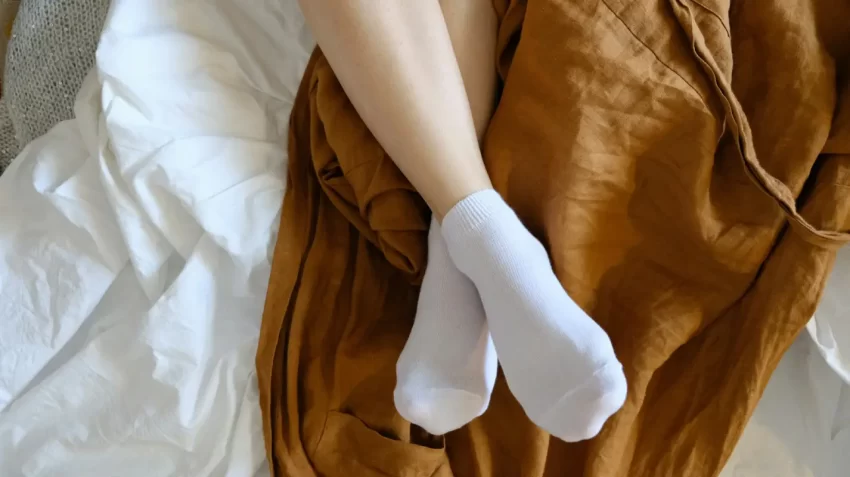For numerous people on the autism spectrum, sensory sensitivities represent a common and challenging part of their everyday experience. These sensitivities can make commonplace experiences overwhelming, often leading to discomfort when encountering everyday stimuli, such as touch, sound, and light. After all, our senses are the lenses through which we experience the world.
Without appropriate accommodations, these heightened sensitivities can turn everyday encounters into sources of distress. Among various accommodations available, selecting a specially designed sock for autism proves to be a simple yet effective solution, providing much-needed relief right at the source by addressing discomfort associated with wearable fabrics.
It is estimated that up to 90% of people with autism experience some form of sensory sensitivity, according to multiple studies. This high prevalence indicates the importance of creating environments and routines that promote comfort and ease. When it comes to clothing, individuals may find themselves particularly susceptible to irritation, where every crease or fold can aggravate the nerves.
The solution lies in seamless, soft, and breathable socks that cater to these sensory needs. These features not only provide immediate relief from discomfort but also enhance the individual’s overall experience and engagement with the world around them.
Why Comfort Matters: The Role of Clothing
For people with sensory sensitivities, the garments they choose can significantly impact their overall quality of life. Comfort and functionality must align to ensure that clothing doesn’t become a source of stress. Clothing materials that rub, chafe, or irritate delicate skin can escalate sensory issues, turning simple activities, such as a walk or social interaction, into sources of anxiety.
On the contrary, sensory-friendly clothing, such as socks without seams, caters explicitly to these sensory needs, helping to prevent discomfort. The relief and comfort provided by such thoughtful apparel designs can enhance one’s overall well-being by reducing daily stress factors and creating a more peaceful, relaxed environment.
Features of Sensory-Friendly Socks
- Seamless Design: Eliminating seams is crucial for reducing the harsh irritation that standard socks typically cause. A seamless finish is more than just a design choice; it’s a necessity for those whose skin becomes easily irritated or sore. It helps create a frictionless experience for sensitive feet.
- Soft Material: These socks are crafted from gentle, soft fabrics that hug the skin without irritating it. Standard fabrics may be too rough or harsh for sensitive skin types, and opting for softer materials can lead to a more pleasant sensory experience overall.
- Breathable Fabrics: Allowing your skin to breathe is crucial for comfort. These socks are designed with superior airflow in mind, which minimizes moisture buildup, ensuring the feet remain dry, calm, and comfortable throughout the day.
- Flexible Fit: These socks provide a snug, comfortable fit. They adapt to the shape of the foot without constriction, ensuring mobility without compromising on comfort or security.
The Scientific Backing: Why These Socks Work
Comfort-focused clothing items are not just soothing by design; scientific insights back them. Multiple studies have demonstrated that individuals with sensory processing concerns can significantly benefit from wearing soft, seamless clothing. For instance, research into sensory integration therapy highlights how reducing irritating fabric elements leads to a decrease in anxiety and stress.
These improvements can be partly attributed to removing familiar sources of irritation, therefore promoting a calming physical and mental environment. Such benefits extend beyond temporary relief, contributing to improved long-term physical comfort and mental well-being.
Choosing the Right Sensory-Friendly Socks
- Check for Seamless Construction: Comfort starts with the removal of abrasive seams, a detail that cannot be overlooked when choosing socks designed for sensitive skin.
- Opt for Natural Materials like Cotton or Bamboo: Natural fibers are naturally softer and gentler on the skin than synthetic options, offering a soothing embrace for delicate feet.
- Ensure the Socks are Breathable with Moisture-wicking Properties: Ensuring the material wicks away moisture is crucial, as wetness can lead to both discomfort and irritation, which can be avoided with the proper sock selection.
Real-Life Impact: Stories from Families
Personal stories from families adopting sensory-friendly clothing highlight the transformative power of these changes. Transitioning to soft and seamless options, including specially designed socks, has reportedly reduced stress caused by irritating sensitivities and, at times, significantly helped alleviate behavioral challenges.
These genuine stories, compassionately shared by families, illustrate how minor adjustments can lead to significant improvements in overall quality of life. It’s standard for parents to share experiences of newfound tranquility with their children after implementing suitable sensory modifications.
Beyond Socks: Incorporating Comfort into Everyday Wear
Comfort is paramount and needs to extend beyond socks to include shirts, pants, and other daily wearables. Each layer of clothing adds to the overall level of comfort, systematically enhancing the daily experience for many on the autism spectrum.
Comfort isn’t just about making a child or adult feel good; it’s about fostering environments where cognitive and emotional stressors are minimized, laying the groundwork for better focus, engagement, and interaction with the world. For individuals who require additional support, such as those managing circulation issues, compression garments can play a crucial role.
Resources like WebMD’s guide on choosing compression stockings offer valuable insights into selecting the right fit for maximum comfort and benefit. Those who continuously seek out and integrate comfort-driven apparel often report measurable increases in their or their loved ones’ comfort, fostering positive engagement and interaction in day-to-day activities.
The Long-Term Benefits of Sensory-Friendly Clothing
Consistently opting for clothing that caters to sensory needs results in numerous benefits over time. Individuals report feeling more secure, resulting in overall improved happiness. The growing awareness and demand for sensory-friendly products have sparked both consumer interest and industry innovation. This trend encourages the development of clothing designs that are not only functional but also fashionable.
According to extensive coverage in the sensory-friendly clothing industry, advancements continue to make comfort more accessible for everyone. This positive shift indicates societal progress toward inclusion and understanding, allowing all individuals to experience the world without the added burden of sensory discomfort.

